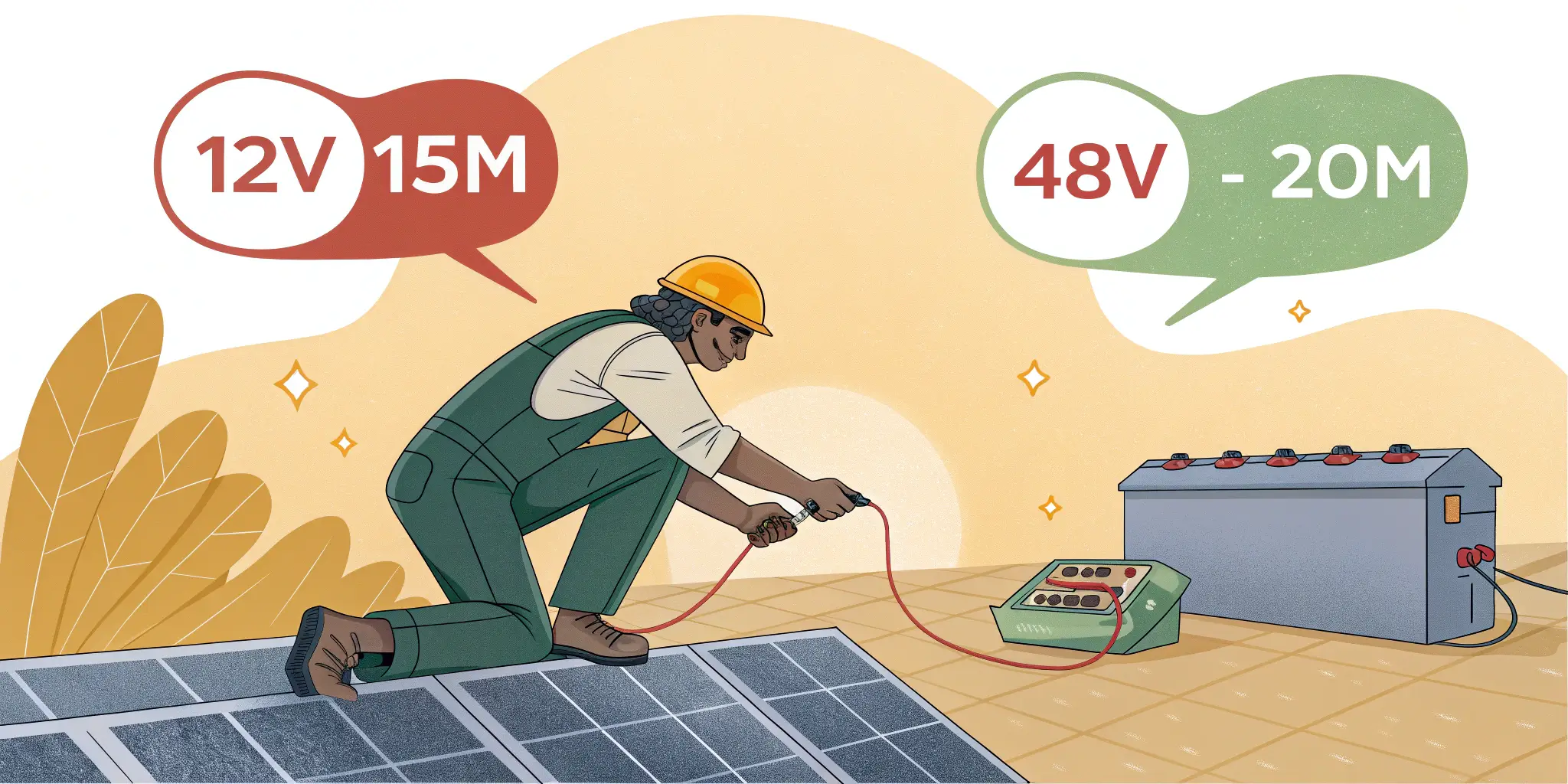How to Choose the Right MC4 Extension Cable Length and Wire Size?
When solar panels are placed far from charge controllers or batteries, choosing the wrong cable size can waste power and cause overheating. Many beginners overlook this, only to lose efficiency over time.
The right MC4 extension cable size depends on current, voltage, and distance — balancing low voltage drop with safe current handling to keep your solar system efficient.
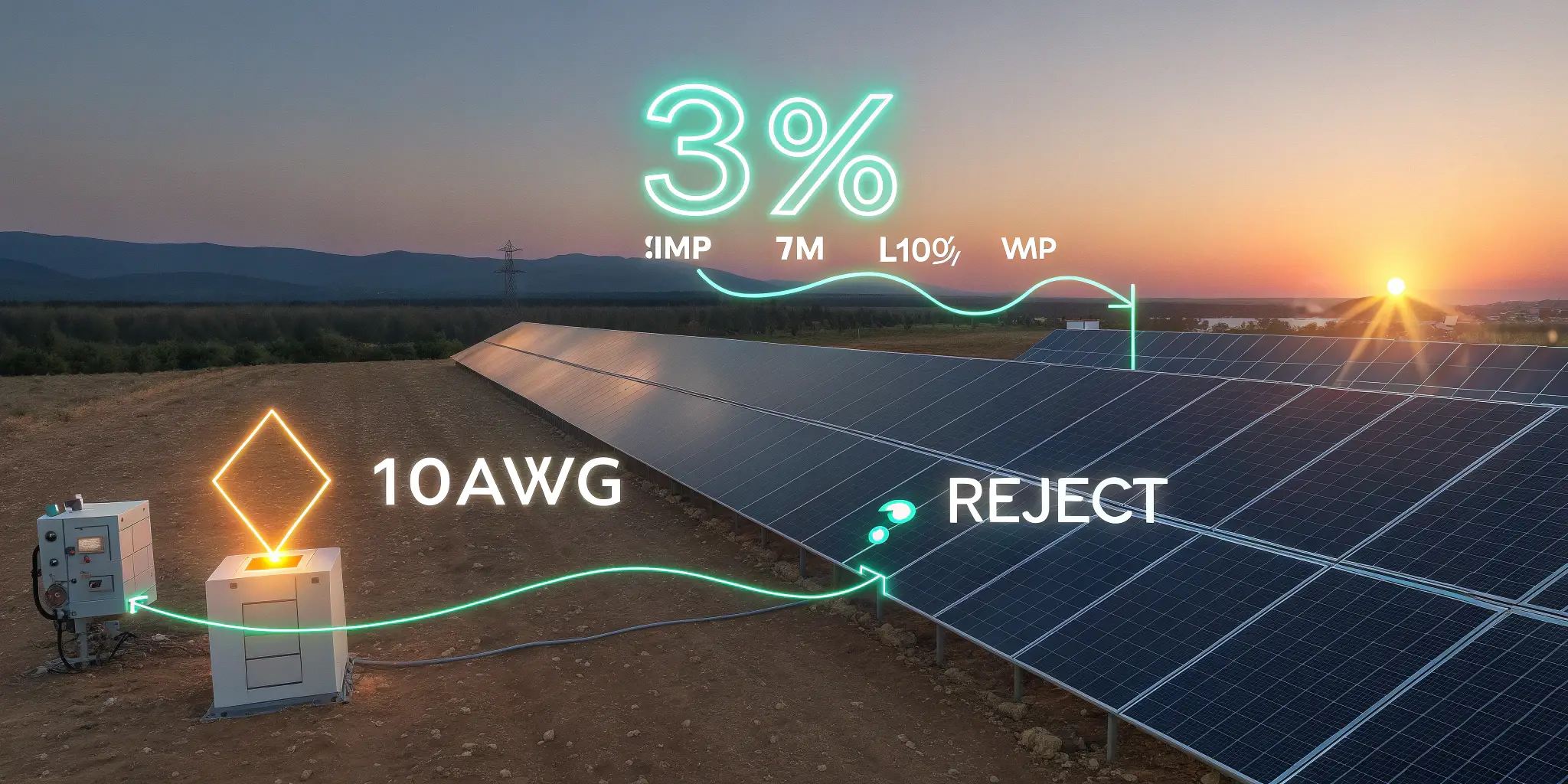
Every meter of wire creates resistance. When you extend your system, you must ensure that resistance doesn’t reduce voltage or waste power as heat. Let’s go step by step to see how cable length and wire gauge affect your system’s performance.
Why Does Cable Length Matter in Solar Power Transmission?
Many solar setups fail not because of bad panels — but because of poor cabling decisions.
Longer MC4 cables increase electrical resistance, which causes voltage drop1 and reduces power delivery from the solar panels to the charge controller or inverter.
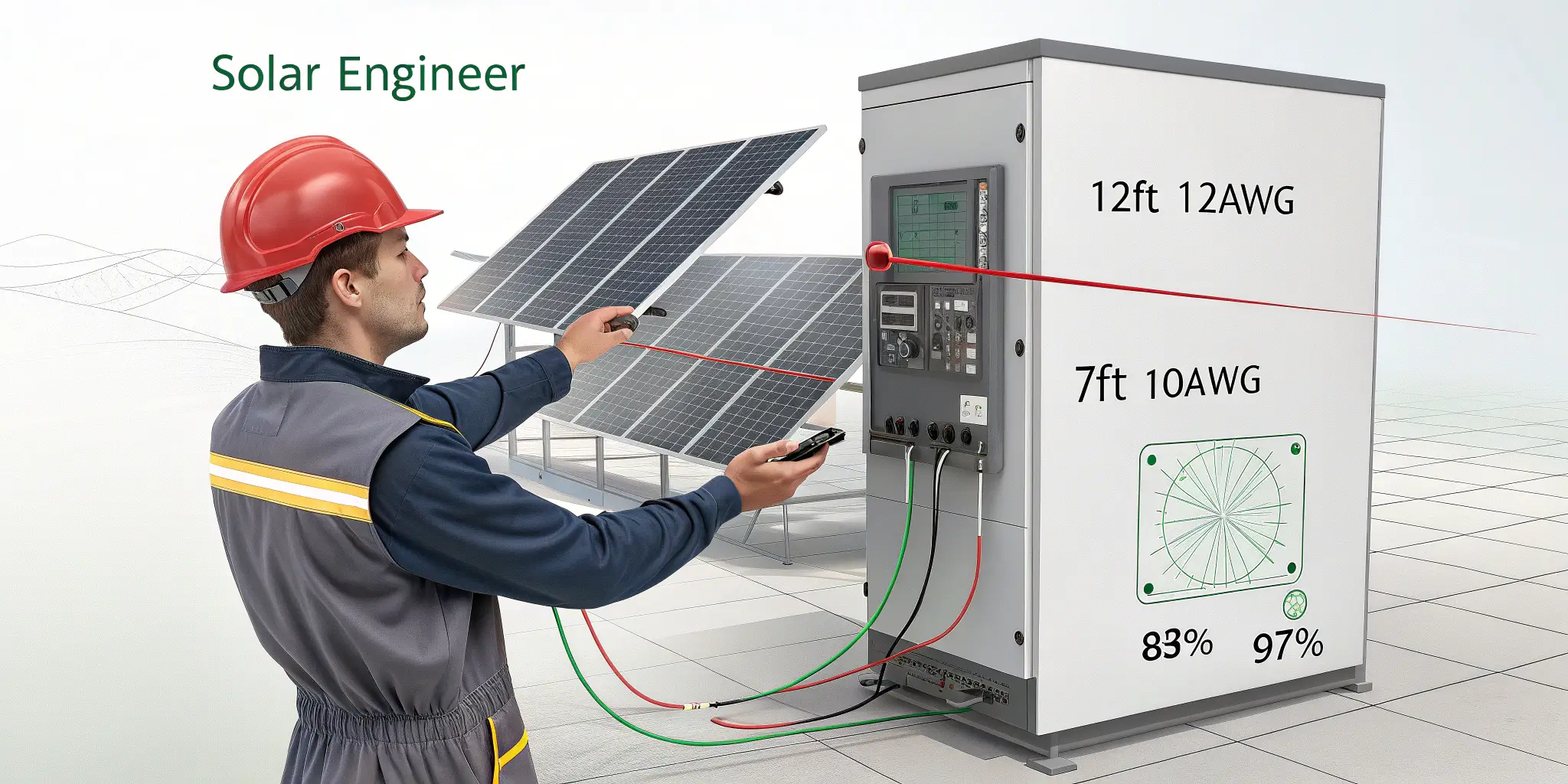
Why It Happens
Electricity flows like water through a pipe. A longer pipe adds friction, and less water reaches the end. In the same way, longer cables resist current flow. That resistance converts energy into heat, lowering voltage at the load side.
| Cable Length | Typical Voltage Drop (%) | Power Loss (Approx.) |
|---|---|---|
| 1–5 meters | 0.5% | Minimal |
| 5–10 meters | 1–2% | Acceptable |
| 10–30 meters | 3–5% | Noticeable |
| >30 meters | 5–10% | Inefficient |
Real Case
In one 24V system, a 20-meter run using 4mm² wire caused a 1.5V drop — almost 6% power loss2. Switching to 6mm² wire reduced it to 0.6V, improving charging speed significantly. Cable length, even a few meters more, can make a measurable difference.
How Does Wire Gauge (AWG3) Affect Voltage Drop in MC4 Extension Cables?
Choosing wire gauge isn’t just about what fits the connector — it’s about keeping voltage steady under load.
Thicker cables (lower AWG numbers) reduce resistance, resulting in lower voltage drop and higher efficiency in long cable runs.
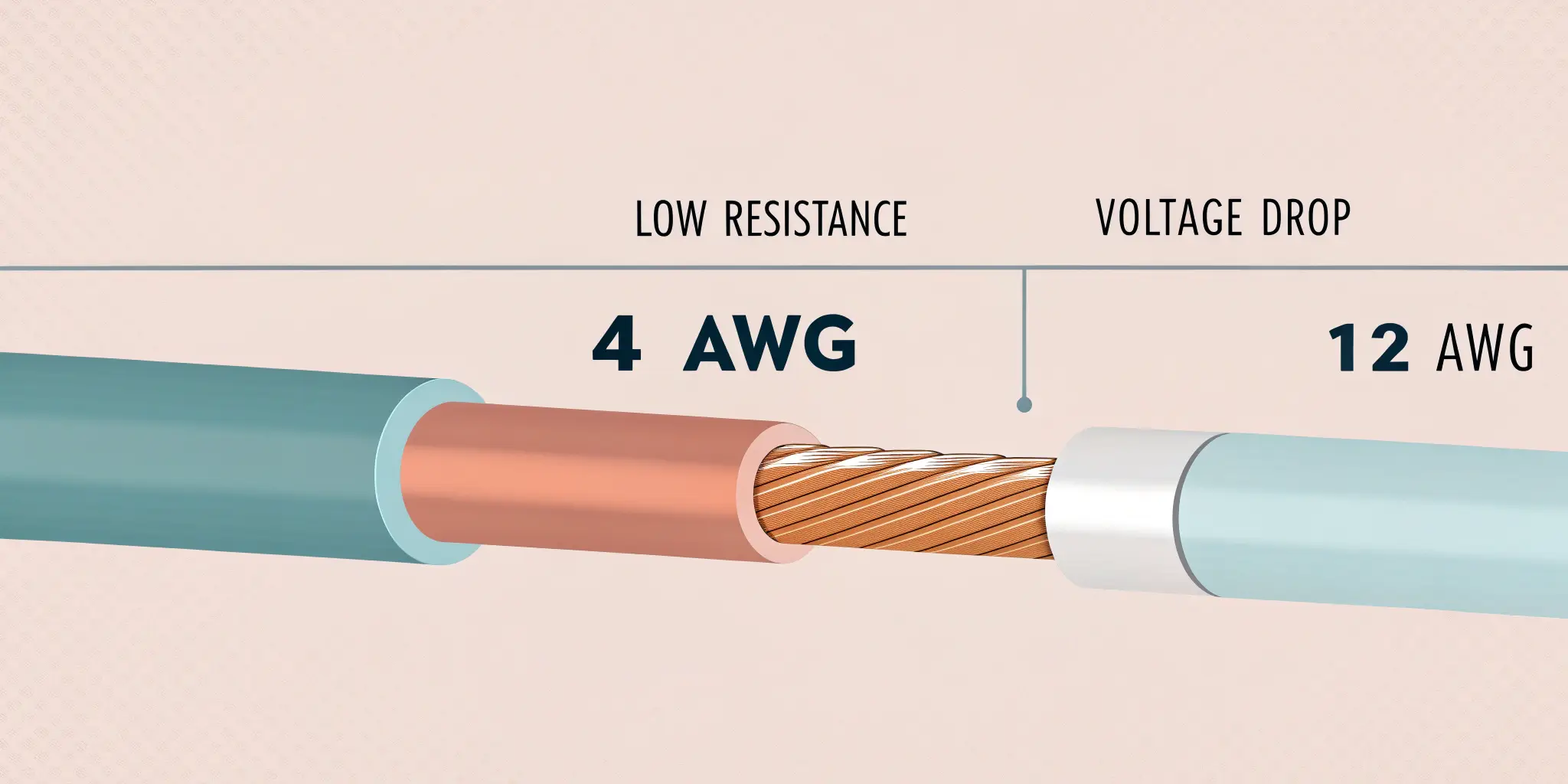
Understanding AWG
The American Wire Gauge (AWG) scale defines wire thickness. The smaller the number, the thicker the wire, and the less resistance it has.
| AWG Size | Cross Section (mm²) | Max Current (Amps) | Typical Use |
|---|---|---|---|
| 14 AWG | 2.5 mm² | 15A | Small 12V systems |
| 12 AWG | 4.0 mm² | 20A | Medium 12V/24V systems |
| 10 AWG | 6.0 mm² | 30A | Large 24V/48V systems |
| 8 AWG | 8.5 mm² | 40A | High-power or long runs |
Key Insight
Each step up in cable thickness cuts resistance by about 30–40%. For instance, if a 12AWG cable causes a 3% drop, switching to 10AWG might cut it to 1.8%. In solar power systems, even a 1% improvement can translate to hours of extra battery charging over time.
What Wire Size Should You Use for 12V, 24V, or 48V Solar Systems?
Voltage affects how much current flows for the same amount of power — lower voltage systems need thicker cables to handle higher currents safely.
Use thicker MC4 cables4 for 12V systems and moderately sized cables for 24V or 48V systems to balance safety, performance, and cost.
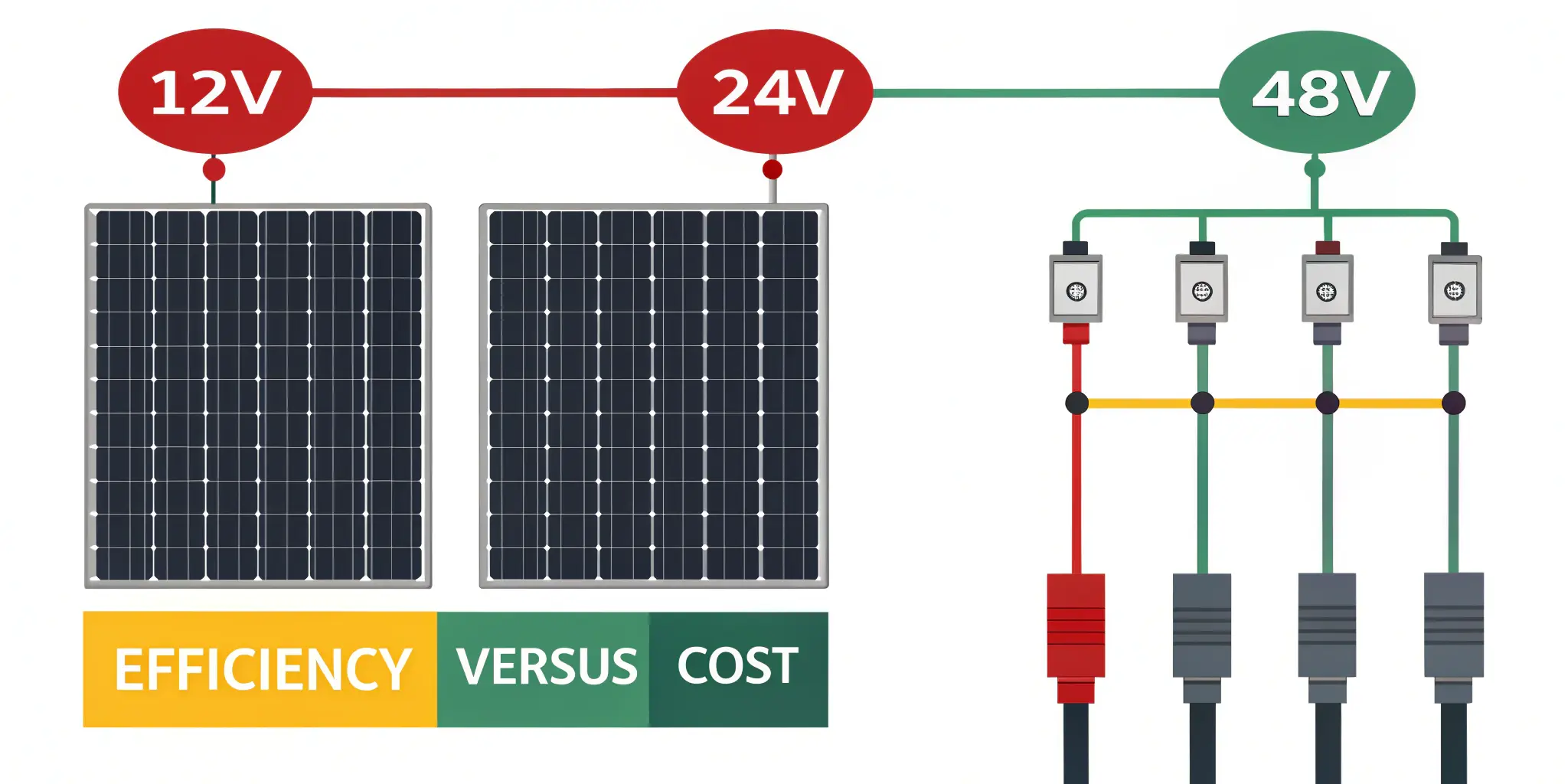
Recommended Cable Sizes
| System Voltage | Typical Current (Amps) | Recommended Wire Size | Max Distance (for <3% Drop) |
|---|---|---|---|
| 12V | 10–20A | 10AWG (6mm²) | 5–10m |
| 24V | 8–15A | 12AWG (4mm²) | 10–20m |
| 48V | 6–10A | 14AWG (2.5mm²) | 20–30m |
The higher the voltage, the lower the current for the same power. That means 48V systems can use smaller cables without suffering as much voltage loss.
Practical Note
When I first designed a small 12V off-grid lighting project, I used 4mm² wire for a 15-meter run. It worked, but the charge controller read only 11.5V under full sun. Upgrading to 6mm² fixed the issue — a clear sign that cable sizing5 isn’t just theory, it’s real-world performance.
How Far Can You Run an MC4 Extension Cable Without Losing Efficiency?
Cable distance is one of the biggest factors affecting solar output, especially in low-voltage systems.
You can usually run MC4 extension cables6 up to 15–20 meters before voltage drop becomes noticeable, depending on system voltage and cable gauge.
Rule of Thumb
Keep total voltage drop below 3% for best efficiency. Use this simple formula to estimate:
Voltage Drop (%) = (Current × Distance × Resistance per meter × 2 ÷ System Voltage) × 100
Example:
- Current = 10A
- Cable = 6mm² (0.0033Ω/m)
- Distance = 20m
- Voltage = 24V
Voltage Drop = (10 × 20 × 0.0033 × 2 / 24) × 100 = 5.5%
So 20 meters is too long for 6mm² on 24V. You’d need thicker cable or shorter runs to keep losses low.
Practical Limits
| Voltage | Ideal Cable Length | Beyond This — Efficiency Drops |
|---|---|---|
| 12V | 5–10m | 15m+ |
| 24V | 10–20m | 25m+ |
| 48V | 20–30m | 40m+ |
I once helped a client with a 30-meter ground-mount setup. Switching from 12V to 48V allowed thinner, cheaper cables without major losses. Sometimes adjusting system voltage is smarter than adding thicker wires.
Are Thicker Solar Cables Always Better for Performance and Safety?
Many installers assume thicker cables7 are always safer. That’s not always true.
While thicker cables reduce voltage drop and resist heat, oversizing can increase cost, difficulty during installation, and connector mismatch risks.
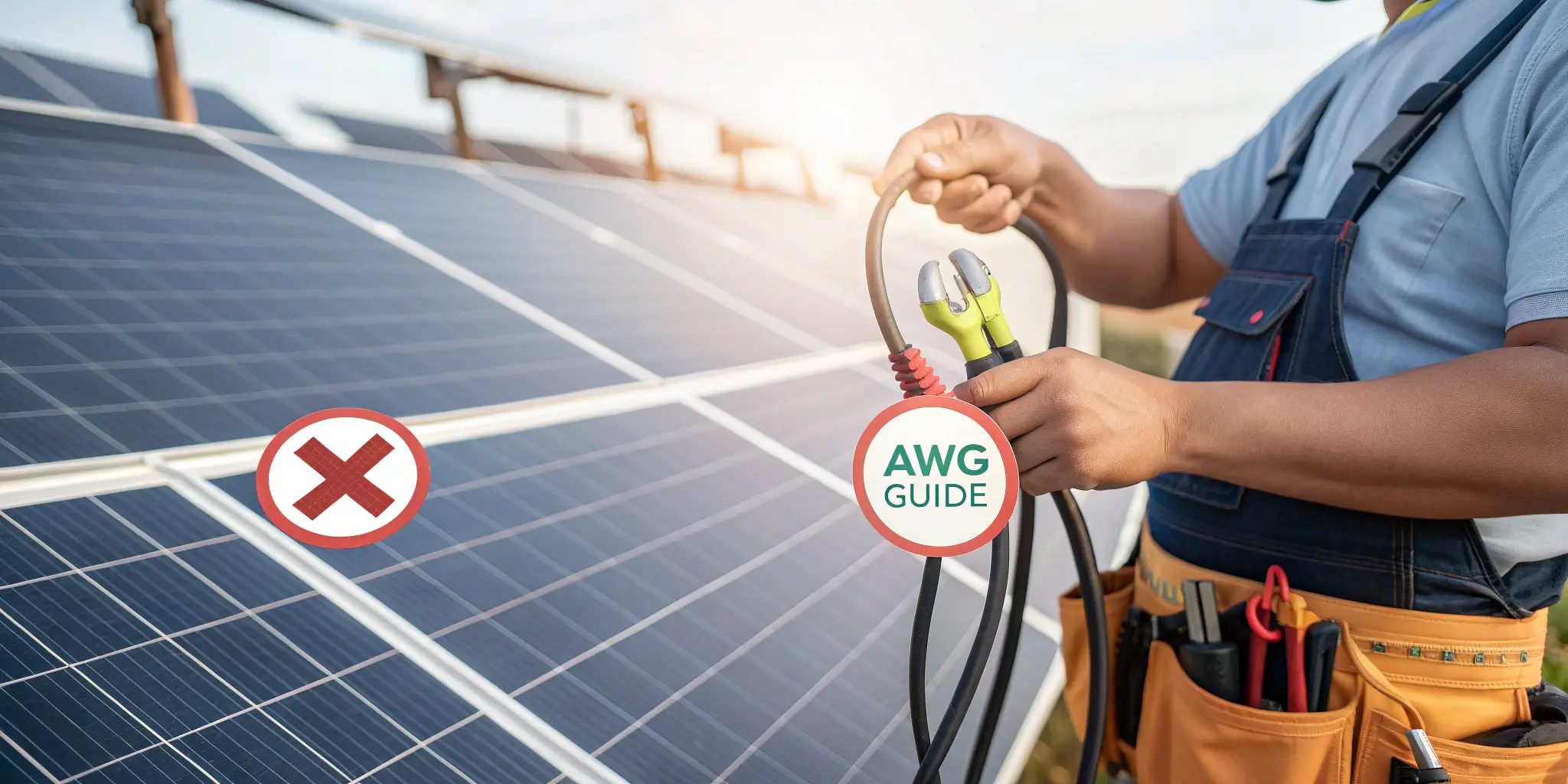
Pros and Cons of Thicker Cables
| Pros | Cons |
|---|---|
| Lower resistance | More expensive |
| Better heat dissipation | Harder to bend or route |
| Higher current capacity | May not fit standard MC4 connectors |
| Improved voltage stability | Heavier for rooftop runs |
Balanced Approach
The goal is not the thickest cable possible — it’s the right balance. A correctly sized cable8 minimizes voltage loss while ensuring compatibility with MC4 terminals and TÜV/IEC standards.
For most 12V/24V systems, 10AWG (6mm²) is a safe, cost-effective choice. For large 48V systems, 12AWG (4mm²) often performs perfectly well.
In my experience, using oversized cable once caused installation delays because the wire couldn’t fit into standard MC4 crimp barrels. We had to trim strands — a safety hazard. Since then, I’ve stuck to sizing based on precise current and voltage, not assumptions.
Conclusion
Choosing the right length and wire size for MC4 extension cables means finding balance — short, thick enough for efficiency, and compliant for safety.
-
Understanding voltage drop is crucial for optimizing solar power efficiency and ensuring maximum energy delivery. ↩
-
Exploring power loss helps in making informed decisions about cable selection and system design for better solar energy utilization. ↩
-
Exploring AWG helps you grasp wire sizing, which is essential for safe and efficient electrical installations. ↩
-
Explore this link to understand the importance of MC4 cables in solar setups and their role in efficiency. ↩
-
Learn about cable sizing to ensure safety and performance in your solar installations. ↩
-
Explore this link to learn essential tips and best practices for optimizing the use of MC4 extension cables in solar setups. ↩
-
Explore this link to understand the real impact of thicker cables on solar performance and safety. ↩
-
Learn why using the right cable size is crucial for efficiency and safety in solar installations. ↩


